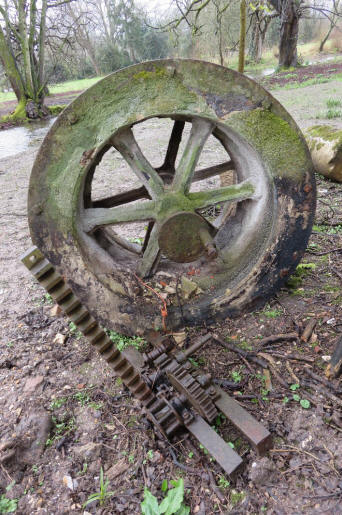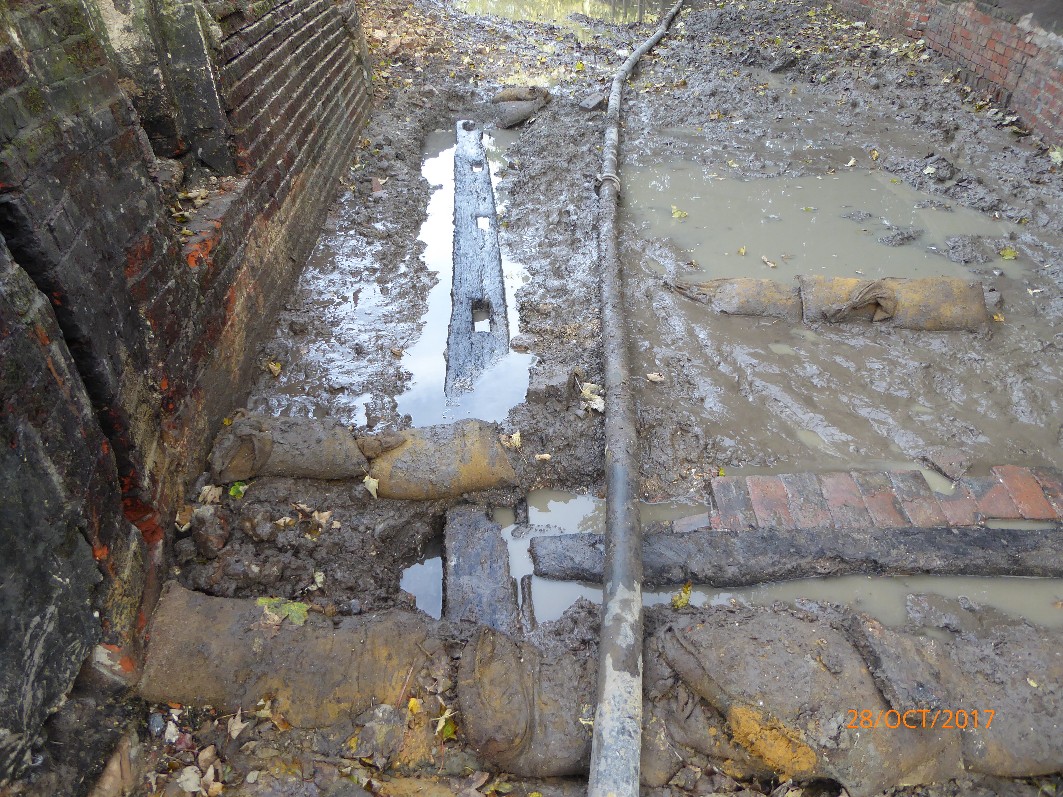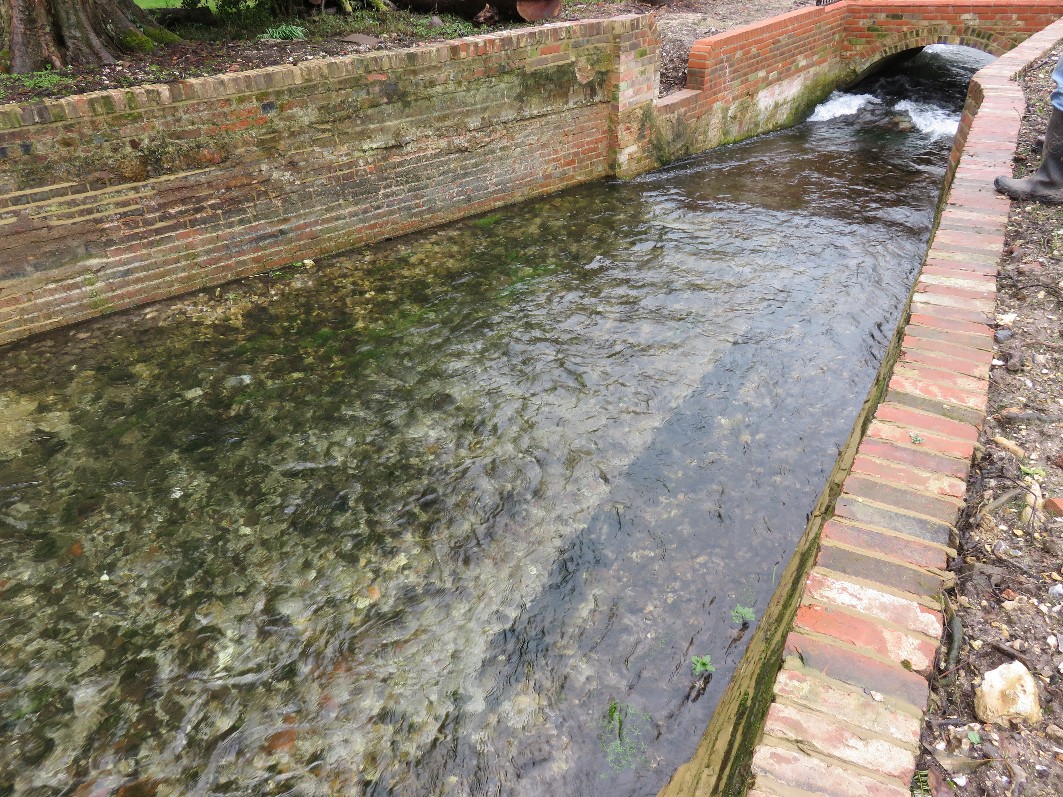|
Overton Silk Mill Site
Ruth Andrews
Photos by Richard
Waldram and Ruth Andrews
|
|
During
October 2017 the Environment Agency/Natural England
did some work landscaping and restoring the river
bed at the Overton silk mill site. This involved
damming the channel, and removing a small
waterwheel, Armfield turbine, and associated
brickwork.
|
 |
In 1994 I had taken a photo (left) of the
site which shows the installation at an earlier
stage of its decay. The metalwork has now been
hauled out of the river (photos below) and
the associated brickwork removed. It powered a
generator and pump, probably installed in about 1910
to supply water and electricity to Southington
House. |
 |
 |
|
We now know that it was situated in the wheelpit of
the 1769 Overton Silk Mill, or a reused wheelpit on
the same site. In the 16th and 17th centuries there
were several mills in Overton, including a corn mill
and a fulling mill. Richard
Waldram contacted HMG because a Community
Volunteer Project managed by Overton Parish Council
had been set up to examine the river bed while it
was dry. Amongst the early finds were two pieces of
millstone which he needed help to identify. The
photo below is of the newly excavated stones.
|
|
.jpg)
|
Now they have been on dry land for a couple of
months they are obviously French burr stones but
they are quite weathered and pitted, and had picked
up a lot of loose mud and gravel during their time
in the river, making them look disconcertingly like
gritstone.
|
|
As the workforce cleared the accumulation of silt
from the site, they also found several stout timbers
in the river bed. Dendrochronology established that
these were felled between 1760 and 1793, making it
almost certain that they were associated with the
silk mill, built in 1769. They are situated just
upstream of the wheelpit, and so may be part of the
sluices and a training wall.
|
|

|
.jpg) |
|
In addition, the curved stones of the silk mill’s
wheelpit were uncovered and removed. Richard had the
presence of mind to use one of the stones to
establish the waterwheel’s diameter, which was
217cm, about 7ft. |
|

|
|

|
The river now flows in a unobstructed channel and
all traces of the earlier works have gone, apart
from a few patches of limescale on the brick edges.
A full report of the excavation and its findings is
being prepared, and there has been a free public
meeting to explain the project. Several HMG
committee members attended this meeting and later
examined the site.
|
|
Many thanks to the owners of Southington House for
allowing us access and to Richard Waldram for
arranging this visit.
|
   |
